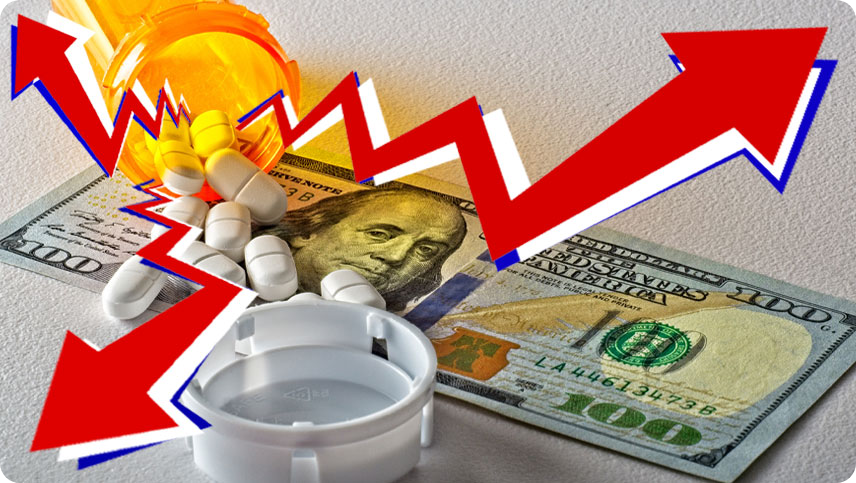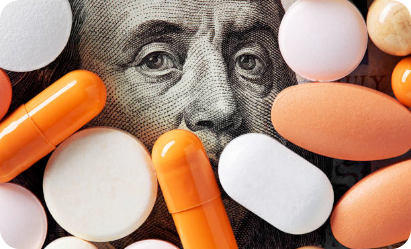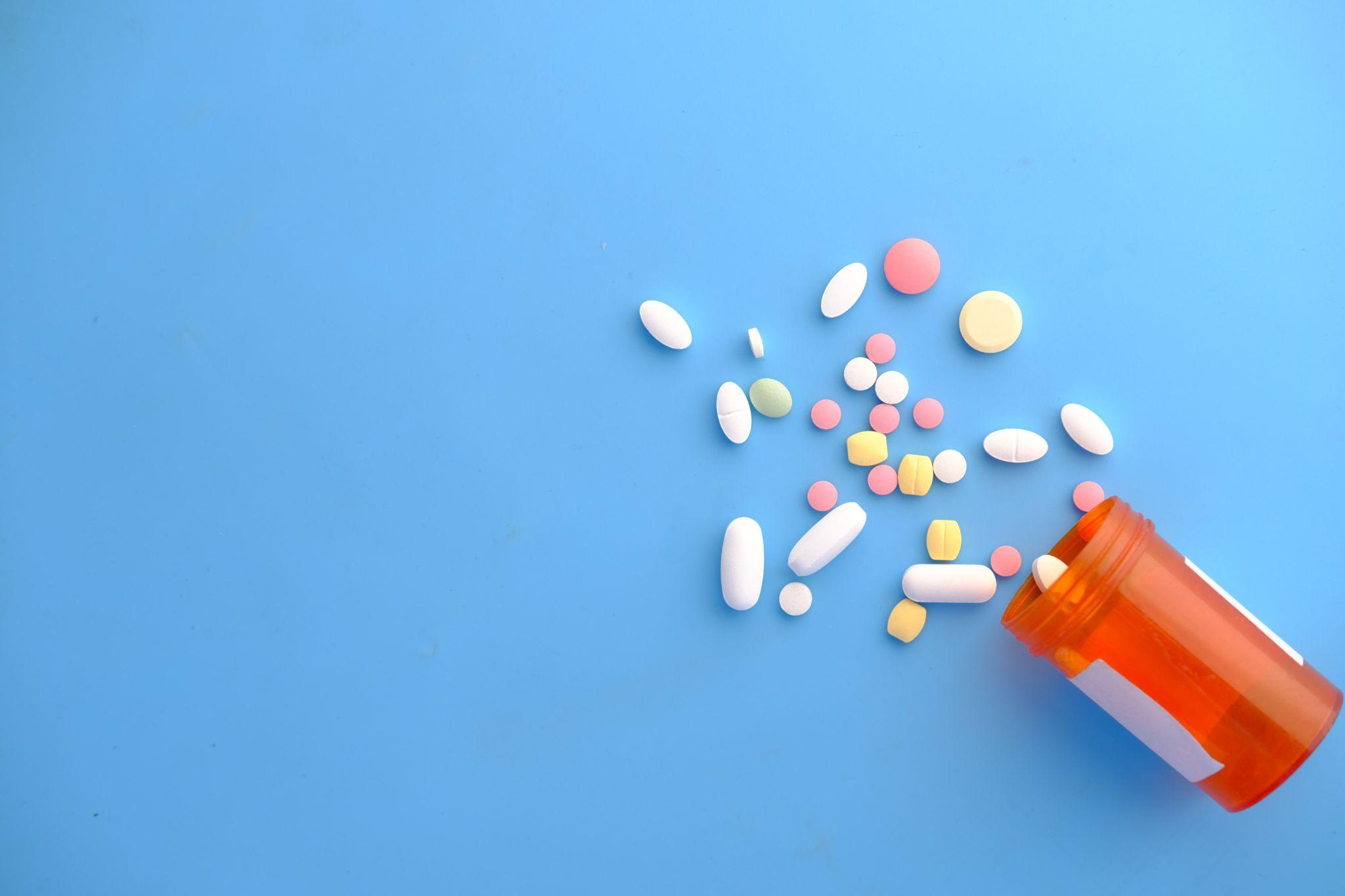
The rising cost of prescription drugs has significant implications not only for the Americans who rely on them but also for the nation's budget and fiscal outlook. Year after year, drug price trends are outpacing inflation. So, what is driving the high price of prescription drugs?
The top five commonly cited causes of rising drug prices are:
Inflation
Lobbying by Drug Companies
No Generic Alternatives Available
Abuses of the Drug Patent System
Monopolies and Less Competitive Drug Markets
This article will dive into these factors contributing to rising prescription drug costs while also explaining why rising drug prices are an issue — and how you can save on your medications.

Why Are Prescription Drug Costs Rising Rapidly?
According to data from the The Peterson Center on Healthcare and KFF (Kaiser Family Foundation), consumers in the U.S. pay more than $1,000 per year for prescription drugs — an amount that is much higher than in other similar countries. And since 2014, drug price increases have been a whopping 35%. But why are prescription drug costs rising so rapidly?
These are some of the main factors contributing to rising prescription drug prices.
1. Inflation
Prices for medication have increased at a faster rate than inflation in recent years and show no signs of slowing. The rapidly rising cost of prescription drugs, coupled with higher prices on other goods, can create havoc on household budgets. Even if a patient has insurance to cover the pharmacy drug price, deductibles are also higher than ever before.
2. Lobbying by Drug Companies
Drug companies have powerful, well-financed lobby groups to make sure legislation works in their favor. State and federal legislation that could help control the prices of medication are thwarted to protect profits.
3. No Generic Alternatives Available
Unfortunately, there is no lower-cost generic version available for many essential drugs. Most name-brand drug patents are protected after filing with the FDA for 20 years, so if you need a newer medication, you have to pay higher prices for your medication.
4. Abuses of the Drug Patent System
Pharmaceutical companies have figured out ways to take advantage of the drug patent system to protect their profits. When initially applying for a patent, they try to lock down other companies' abilities to research the same components. They also attempt to patent features that are not technically innovations, such as different doses or tablet coatings. When a patent is about to expire, the company can apply for a new patent based on the same drug being used for a different illness or orphan drug status — all of these result in market exclusivity and rising drug prices.
5. Monopolies and Less Competitive Drug Markets
Even though brand-name drugs account for only 10 percent of the prescription drug market, spending on such drugs accounts for almost 80 percent of total prescription drug costs, according to IQVIA, Inc. The only choice a consumer has for many drugs is the name brand.
More than $1 out of every $5 spent on drugs goes directly to the profits of pharmaceutical companies.
6. United States Government
The United States is far behind regarding regulations on drug pricing. This is why you may see prices on insulin as high as $98 on average vs. $12 in Canada. Since the establishment of Medicaid and Medicare, there has been a decrease in costs for generic drugs, while seeing increases in name-brand drugs. However, the government does not directly regulate drug prices — drug prices are set by the drug manufacturers.
Congress is considering legislation that will allow Medicare to leverage its substantial bargaining power for the first time.
The Rising Cost of Prescription Drugs Impacts the Economy
Just like rising drug prices affect your personal finances, they also have negative consequences on governmental agencies. Higher Medicare and Medicaid spending has a severe impact on State and Federal budgets. Federal law prohibits these federally-funded programs from negotiating drug prices, further exacerbating the issue.
High drug prices also impact businesses. The increased expenses for prescription drugs threaten to push some healthcare plans over the Cadillac plan threshold set by the Affordable Care Act — costing employers a 40 percent tax as a penalty.

How To Combat Rising Drug Prices
According to a Kaiser Family Foundation poll, 29% of American adults are not taking their medicines properly because of the high price of prescription drugs. That's why knowing how to get the best prices for medication is crucial.
Here are a few of our favorite solutions to the rising cost of prescription drugs.
Drugmart.com Prescription Referral Service
An easy way to grapple with the rising cost of prescription drugs is to shop online using an international pharmacy referral service like Drugmart.com. We provide drugs from our trusted pharmacy partners at prices lower than those offered on the U.S. market, which translates to significant savings for consumers.
Generics and Biosimilars
Choosing generics is one of the most well-known ways to fight rising drug prices. Simply asking your doctor or pharmacy if a generic or biosimilar medication is available can result in substantial savings. Compare prices for the medication at different pharmacies, too, because some generics are available free of charge depending on where you shop.
Manufacturers Coupons
Pharmaceutical companies frequently offer coupons for their high-cost products in an effort to help consumers manage the rising cost of prescription drugs. Whether it's actual coupons or copay assistance programs, the manufacturers provide these to reduce pharmacy drug prices and entice consumers to purchase their name-brand drug instead of a generic. Check the website or ask your doctor or pharmacy if discounts are available.
Take Control of Rising Prescription Drug Costs With Drugmart.com
Drugmart.com is the Canadian online prescription referral service that you can trust to help you tackle the high price of prescription drugs. We bring you savings right to your door. Shop now for prescription medication to begin saving on rising drug prices.


